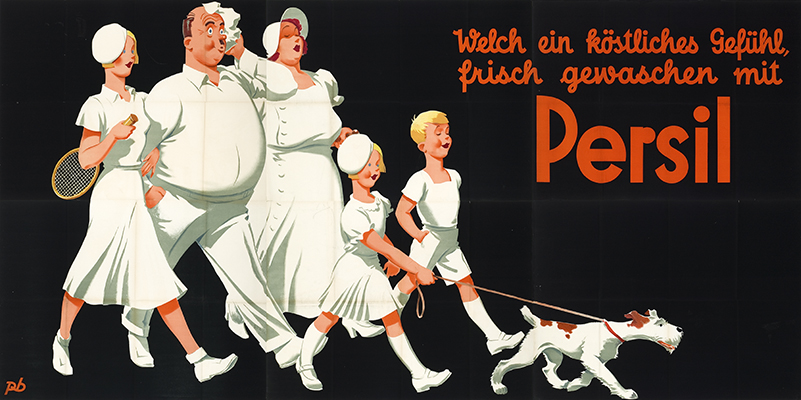
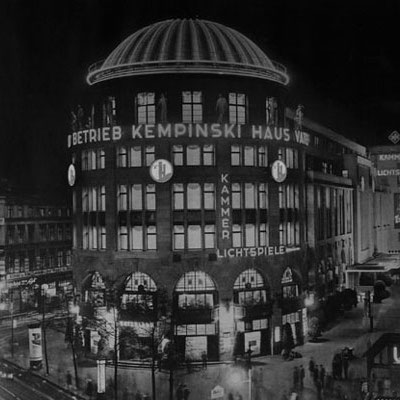
Haus Vaterland
Occupying almost the entire Potzdamer Platz, one of the vast pleasure palaces of late 1920s Berlin was Haus Vaterland.

The impressively domed, 6-storey building was constructed in 1911 by architect Franz Schwechten and opened as House Potsdam. Immediately to the east of the railway station, it initially housed offices, an ÜFA cinema, and a 2500-seater cafe on the ground floor.
In 1928, the building was acquired by the Kempinski family who set about converting it into an enormous ‘department store’ of pleasure. It housed 12 ‘themed’ restaurants, a cinema, a variety theatre, a Palm Court ballroom and the largest coffee house in Berlin. It was capable of seating 8,000 diners at any one time and had the largest catering kitchen in the world. Entry to the complex was 1 mark and, within the first year, a million people had come through the impressive marbled entrance hall.
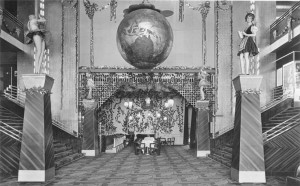
The Löwenbräu, on the third floor, was a one-thousand seater Bavarian Biergarten complete with buxom barmaids in traditional dress and promenading musicians and entertainers.
Also on the third floor was the Rhineland Wine Terrace, a cavernous hall with an artificial river which flowed around the edges of a 70ft recreation of the Rheinish countryside. Once an hour, a simulated ‘storm on the Rhein’, darkened the room and showered the guests in rain before re-emerging into an equally fake sunburst, provided by a battery of electric lights.
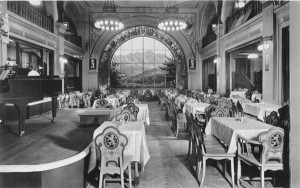
In a corner of the wine terrace was a dimly-lit Turkish cafe.
The Wild West Bar on the fourth floor was a complete recreation of a American saloon. Customers entered through swinging doors and were greeted by waiters in ten-gallon hats serving pre-prohibition era American cocktails. Entertainment came in the form of a jazz band and showgirls, and black-face minstrel shows.
The Grinzing was a Viennese cafe with a diorama of old Vienna and the Danube. A tiny electric railway ran through the room, crossing bridges with equally tiny boats sailing along canals beneath.
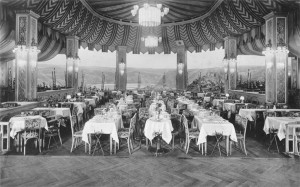
For an extra three mark entry fee, nightly floorshows were on offer in the fifth-floor Palm Tree Room. Big name cabaret and variety acts of the time were accompanied by a chorus of showgirls and a succession of bands. The entertainment ran until 3am.
Also on offer at Haus Vaterland was a Spanish Bodega, a Hungarian pastry restaurant, a Japanese tea-garden, a student beer hall, and the Üfa cinema, still very much in operation .
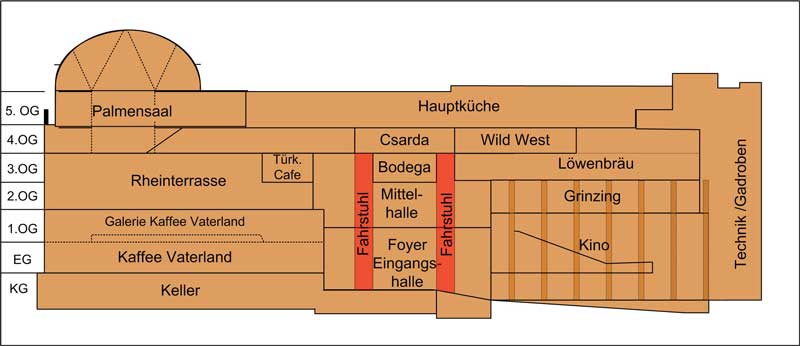
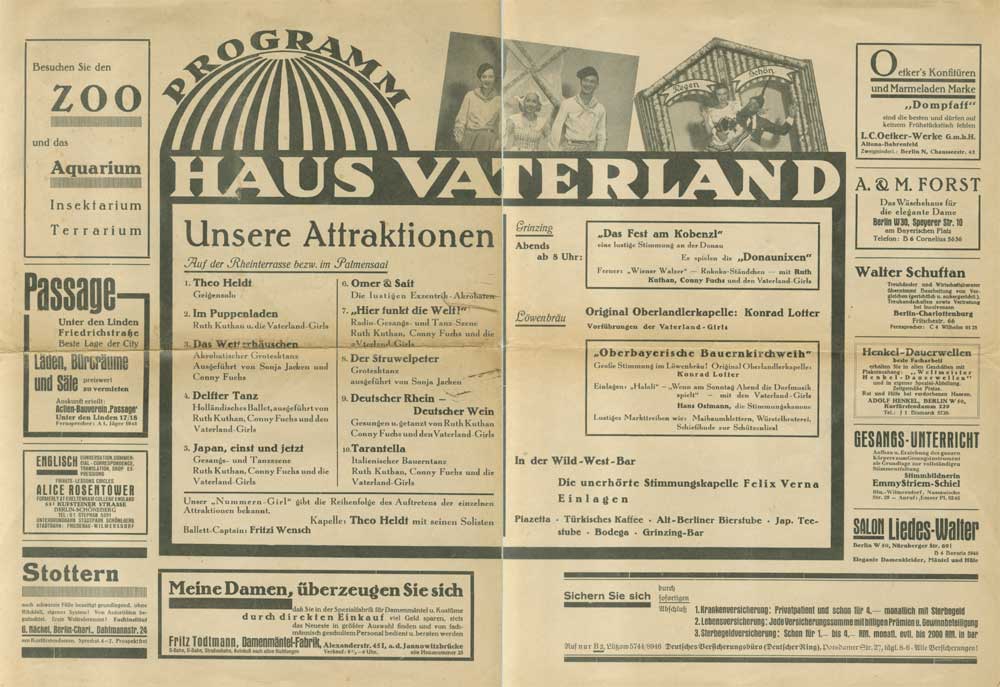
The business continued operating successfully until 1943, when the building was bomb-damaged and caught fire, before a second devastating fire finally destroyed the building in 1953. The premises was simply made secure and left abandoned, and was then swallowed-up in the no-mans-land of the Berlin Wall. It was eventually demolished in 1976.

